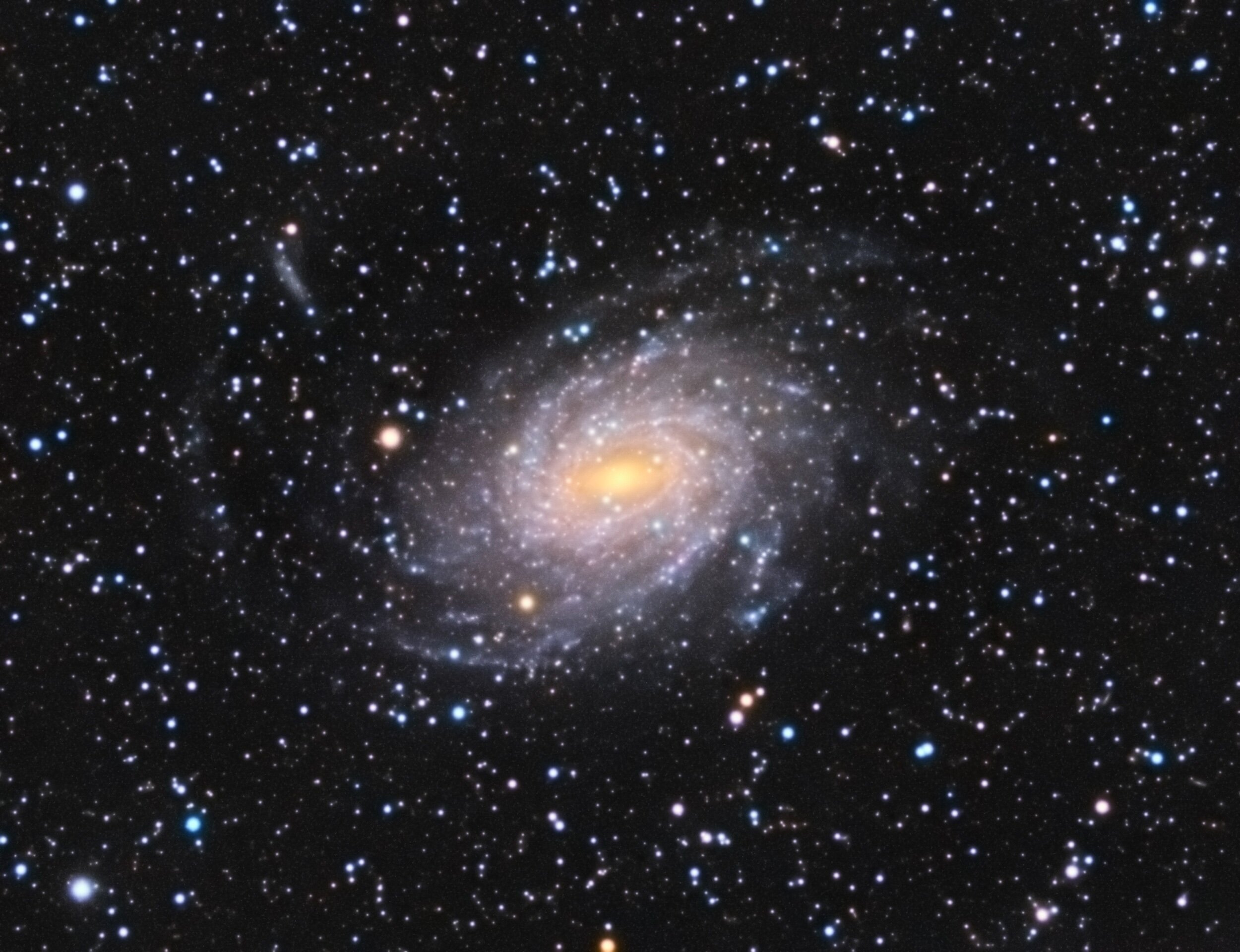NGC 6744
Image Description and Details :
NGC 6744 - I started this project at the end of May, capturing data over a total of 10 nights. This intermediate spiral galaxy is bigger than the Milky Way, with a disk stretching 175,000 light-years across. A small, distorted companion galaxy is located nearby, which is similar to our galaxy's Large Magellanic Cloud. This companion, called NGC 6744A can be seen in the main galaxy's outer arm in the upper left of this image.
Lights -
Lum: 529 X 60 sec
Red: 200 X 60 sec
Green: 200 X 60 sec
Blue: 200 X 60 sec
Darks - 50
Flats - 50 per filter
Flat darks - 50 per filter
Total integration time - 18.82 hours
Equipment
Telescope - @celestronuniverse Edge HD 800
Camera - @zwoasi ASI294MM Pro
Filters - Optalong L-Pro & Baader RGB filters
Mount - SW EQ6-R Pro
Focuser - @primalucelab ESATTO 2”
Guidescope - Astromania 70mm guidescope
Guide camera - @zwoasi 120mm
Controller - Pegasus Astro Pocket Powerbox
Main processing steps in Pixinsight
For Luminance data
1. Calibration, registration, normalisation & stacking
2. Dynamic background extraction
3. Deconvolution
4. MultiscaleLinearTransform
5. Histogram stretch
6. Curves
For the Colour data
1. Calibration, registration, normalisation & stacking
2. Dynamic background extraction
3. MultiscaleLinearTransform
4. Histogram stretch
5. Curves
For the RGB image
1. ChannelCombination
2. Dynamic background extraction
3. PhotometricColorCalibration
4. SCNR
5. Histogram stretch
6. Extract Luminance from RGB image
7. Apply LRGBCombination (L only) on RGB image repeatedly until colours are saturated
8. Convolution
For LRGB image
1. Apply Luminance date using LRGBCombination (L only)
2. Curves
3. MorphologicalTransformation
Copyright: Peter Dunsby
AAPOD2 Title: NGC 6744
AAPOD2 Page Link: https://www.aapod2.com/blog/Ngc-6744
Submit Your Photo!

